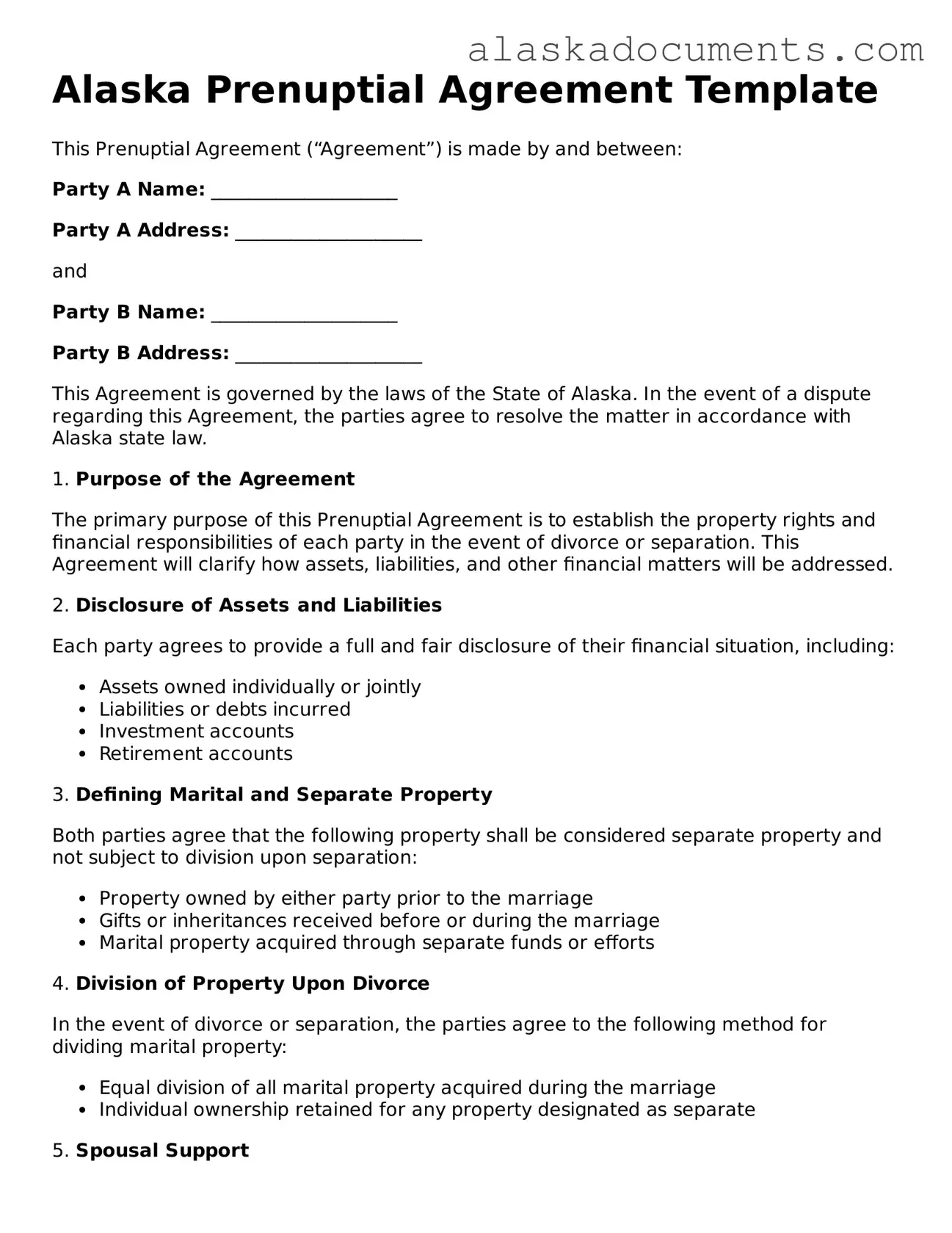Alaska Prenuptial Agreement Template
This Prenuptial Agreement (“Agreement”) is made by and between:
Party A Name: ____________________
Party A Address: ____________________
and
Party B Name: ____________________
Party B Address: ____________________
This Agreement is governed by the laws of the State of Alaska. In the event of a dispute regarding this Agreement, the parties agree to resolve the matter in accordance with Alaska state law.
1. Purpose of the Agreement
The primary purpose of this Prenuptial Agreement is to establish the property rights and financial responsibilities of each party in the event of divorce or separation. This Agreement will clarify how assets, liabilities, and other financial matters will be addressed.
2. Disclosure of Assets and Liabilities
Each party agrees to provide a full and fair disclosure of their financial situation, including:
- Assets owned individually or jointly
- Liabilities or debts incurred
- Investment accounts
- Retirement accounts
3. Defining Marital and Separate Property
Both parties agree that the following property shall be considered separate property and not subject to division upon separation:
- Property owned by either party prior to the marriage
- Gifts or inheritances received before or during the marriage
- Marital property acquired through separate funds or efforts
4. Division of Property Upon Divorce
In the event of divorce or separation, the parties agree to the following method for dividing marital property:
- Equal division of all marital property acquired during the marriage
- Individual ownership retained for any property designated as separate
5. Spousal Support
Both parties agree on the following provisions regarding spousal support:
- No spousal support will be awarded to either party
- Agreed-upon spousal support will be paid for a specified period
6. Amendment and Revocation
This Agreement may be amended or revoked only by a written agreement signed by both parties. No oral agreements will be recognized.
7. Governing Law
This Agreement will be governed by the laws of the State of Alaska. Any legal actions arising from this Agreement will be filed in the appropriate court located within the state.
IN WITNESS WHEREOF, the parties have executed this Prenuptial Agreement as of the ____ day of __________, 20___.
Party A Signature: ____________________
Party B Signature: ____________________
Witness Name (optional): ____________________
Witness Signature (optional): ____________________
